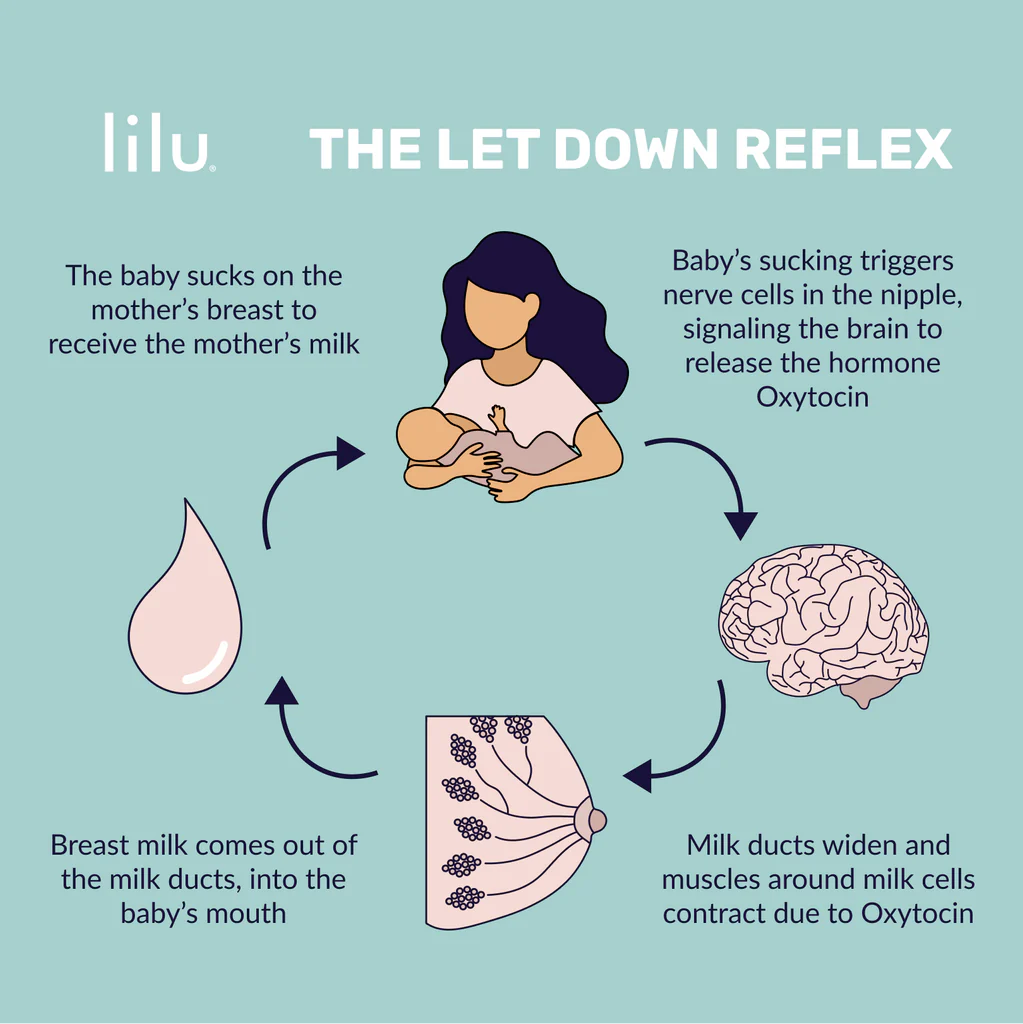Is Your Let-Down Reflex Slowing Down?
Concerned about whether your let-down reflex is functioning properly? It’s common for the sensation to feel less intense as your baby grows older. Many mothers never perceive the let-down reflex at all, while others gradually lose awareness of it over time. This does not necessarily mean the reflex is absent or ineffective.
Signs of a Healthy Let-Down Reflex
During the initial postpartum weeks, you might notice mild uterine cramping during let-down, a response linked to oxytocin release. Additionally, observe your baby’s feeding pattern: they often transition from rapid, shallow sucking (similar to pacifier use) to slower, deeper, rhythmic suck-swallow motions about a minute into the feeding.
Mothers may experience a sudden sense of calm, relaxation, or drowsiness during breastfeeding, along with intense thirst—a physiological signal tied to hormonal shifts. Audible swallows from your baby, characterized by subtle puffs of air from the nose and movement near the ear muscles, further indicate active milk flow.
Less Common Symptoms
Some mothers report atypical sensations during let-down, such as skin itching, nausea, headaches, or fleeting negative emotions. These variations are generally harmless but should be monitored if persistent or severe.
Remember, the absence of noticeable let-down sensations does not equate to insufficient milk supply. As long as your baby demonstrates effective feeding patterns (e.g., steady weight gain and adequate diaper output), your let-down reflex is likely functioning as intended.
Understanding Challenges with Milk Release
Experiencing difficulty triggering a milk release during pumping compared to nursing is common for many mothers. While milk production may be adequate, the process of initiating and allowing milk flow can feel challenging. Some mothers also encounter impaired let-down reflexes even during direct breastfeeding.
Factors contributing to delayed milk release range from psychological states like anxiety, stress, or embarrassment to physical influences such as pain, cold environments, or excessive caffeine intake. Lifestyle choices, including smoking, alcohol consumption, or certain medications, may further hinder this reflex. Mothers who have undergone breast surgeries may face additional hurdles due to potential nerve damage affecting milk release. In high-stress scenarios, the body’s surge of adrenaline—a natural “fight or flight” response—can suppress hormones essential for effective let-down.
A frustrating cycle may develop when a baby becomes restless or detaches due to delayed milk flow, heightening the mother’s tension and further slowing the reflex. Techniques such as relaxation practices or sensory cues (e.g., warmth, gentle massage, or visualizing the baby) can help interrupt this pattern and encourage smoother milk release. Prioritizing comfort, minimizing distractions, and fostering a calm environment often support the body’s natural responses.
The Let-Down Reflex as a Learned Response
The let-down reflex operates partly as a conditioned response—a learned reaction shaped through repeated associations. This concept traces back to Ivan Pavlov, a Russian neurophysiologist renowned for his studies on conditioned reflexes.
In Pavlov’s classic experiments, dogs were repeatedly exposed to a bell ringing just before feeding. Over time, the dogs began salivating at the sound of the bell alone, even without food. The bell became a trigger for a biological response originally tied to the presence of food.
Translating this to breastfeeding: Introducing a consistent “let-down cue” (e.g., deep breathing, sipping tea) right before nursing can train your body to associate the cue with milk release. Once this connection solidifies, the cue alone—even without immediate nursing—can prompt let-down.
Breaking it down using Pavlov’s framework:
- Nursing itself acts as the natural trigger (unconditioned stimulus),
- Milk release in response to nursing is the natural reflex (unconditioned response),
- The chosen cue (e.g., deep breathing) becomes the learned trigger (conditioned stimulus),
- Let-down in response to the cue alone becomes the learned reflex (conditioned response).
Key insights from Pavlov’s work apply here:
- Timing matters. Pairing the cue immediately before nursing strengthens the association.
- Consistency enhances effectiveness. Repeating the same actions or environment (e.g., sitting in a specific chair, holding a favorite mug) reinforces the reflex.
- Intensity plays a role. Combining multiple cues (e.g., relaxation techniques, hydration, visualization) may amplify the response compared to a single prompt.
For mothers struggling with let-down, establishing routines—such as using identical cues before each feeding—can help retrain the body’s response. Over time, these practiced signals may reactivate the reflex, even during periods of stress or distraction. The goal is to create reliable, sensory-driven pathways that bypass conscious effort, allowing milk flow to begin smoothly and predictably.
Sensory Strategies to Support Milk Release
Harnessing multiple senses can enhance your let-down reflex. Focus on your baby’s presence—observe their movements, listen to their sounds, and embrace their scent and touch. Establish sensory rituals, such as sipping a specific beverage or playing calming music, at the start of each nursing session to signal your body.
Pre-Feeding Preparation
Create a soothing environment before nursing. A warm shower or bath can relax muscles and promote circulation. Address pain with approved pain relievers 30 minutes beforehand, as discomfort may hinder let-down. Choose quiet, dimly lit spaces to minimize distractions. Undress your baby to their diaper and remove your upper clothing to maximize skin-to-skin contact. Settle into a supportive chair or recline comfortably, ensuring proper back and arm alignment. Gentle breast massage, nipple stimulation, and moist heat application can further prepare your body.
During Feeding Techniques
Begin with deep breathing or relaxation methods similar to those used during labor. Humming or singing may accelerate milk release. Visualization is powerful: close your eyes and imagine milk flowing freely, picture serene landscapes, or focus on sensory details like ocean waves or warm sunlight. Alternatively, distract yourself with light activities such as reading or watching TV to ease tension. Apply a heating pad to your back or request a shoulder massage to enhance relaxation. Switch nursing positions frequently and use breast compressions to stimulate milk flow.
Pumping Away from Baby
When separated from your baby, rely on sensory cues to mimic their presence. Look at photos or videos of them nursing. Play recordings of their cries or feeding sounds through headphones. Keep a piece of their clothing in a sealed bag to evoke their scent during pumping. Research indicates that combining guided relaxation audio with visual cues (e.g., baby photos) can significantly increase milk volume and fat content. One study noted mothers producing 2-3 times their usual output when using these methods.
Key Takeaways
Consistency and sensory engagement are critical. Repetition of cues—like a specific drink, song, or ritual—strengthens the conditioned reflex. Pairing relaxation practices with sensory triggers (e.g., warmth, scent, sound) creates a feedback loop that supports efficient milk release. Whether nursing or pumping, prioritizing calm and familiarity helps align your body’s natural rhythms with your baby’s needs.





